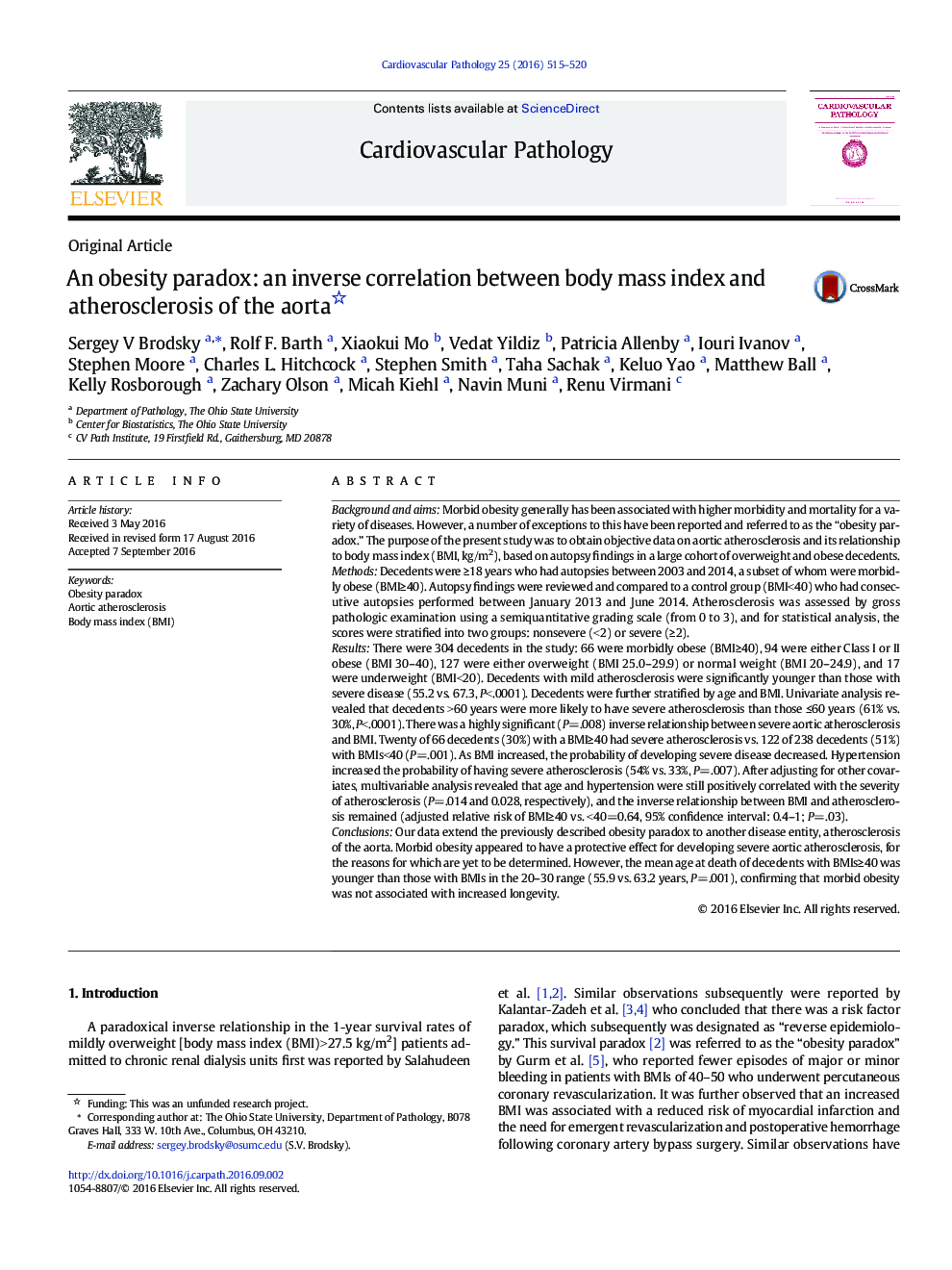| کد مقاله | کد نشریه | سال انتشار | مقاله انگلیسی | نسخه تمام متن |
|---|---|---|---|---|
| 6481925 | 1405291 | 2016 | 6 صفحه PDF | دانلود رایگان |

Background and aimsMorbid obesity generally has been associated with higher morbidity and mortality for a variety of diseases. However, a number of exceptions to this have been reported and referred to as the “obesity paradox.” The purpose of the present study was to obtain objective data on aortic atherosclerosis and its relationship to body mass index (BMI, kg/m2), based on autopsy findings in a large cohort of overweight and obese decedents.MethodsDecedents were â¥18 years who had autopsies between 2003 and 2014, a subset of whom were morbidly obese (BMIâ¥40). Autopsy findings were reviewed and compared to a control group (BMI<40) who had consecutive autopsies performed between January 2013 and June 2014. Atherosclerosis was assessed by gross pathologic examination using a semiquantitative grading scale (from 0 to 3), and for statistical analysis, the scores were stratified into two groups: nonsevere (<2) or severe (â¥2).ResultsThere were 304 decedents in the study: 66 were morbidly obese (BMIâ¥40), 94 were either Class I or II obese (BMI 30-40), 127 were either overweight (BMI 25.0-29.9) or normal weight (BMI 20-24.9), and 17 were underweight (BMI<20). Decedents with mild atherosclerosis were significantly younger than those with severe disease (55.2 vs. 67.3, P<.0001). Decedents were further stratified by age and BMI. Univariate analysis revealed that decedents >60 years were more likely to have severe atherosclerosis than those â¤60 years (61% vs. 30%, P<.0001). There was a highly significant (P=.008) inverse relationship between severe aortic atherosclerosis and BMI. Twenty of 66 decedents (30%) with a BMIâ¥40 had severe atherosclerosis vs. 122 of 238 decedents (51%) with BMIs<40 (P=.001). As BMI increased, the probability of developing severe disease decreased. Hypertension increased the probability of having severe atherosclerosis (54% vs. 33%, P=.007). After adjusting for other covariates, multivariable analysis revealed that age and hypertension were still positively correlated with the severity of atherosclerosis (P=.014 and 0.028, respectively), and the inverse relationship between BMI and atherosclerosis remained (adjusted relative risk of BMIâ¥40 vs. <40=0.64, 95% confidence interval: 0.4-1; P=.03).ConclusionsOur data extend the previously described obesity paradox to another disease entity, atherosclerosis of the aorta. Morbid obesity appeared to have a protective effect for developing severe aortic atherosclerosis, for the reasons for which are yet to be determined. However, the mean age at death of decedents with BMIsâ¥40 was younger than those with BMIs in the 20-30 range (55.9 vs. 63.2 years, P=.001), confirming that morbid obesity was not associated with increased longevity.
Journal: Cardiovascular Pathology - Volume 25, Issue 6, NovemberâDecember 2016, Pages 515-520